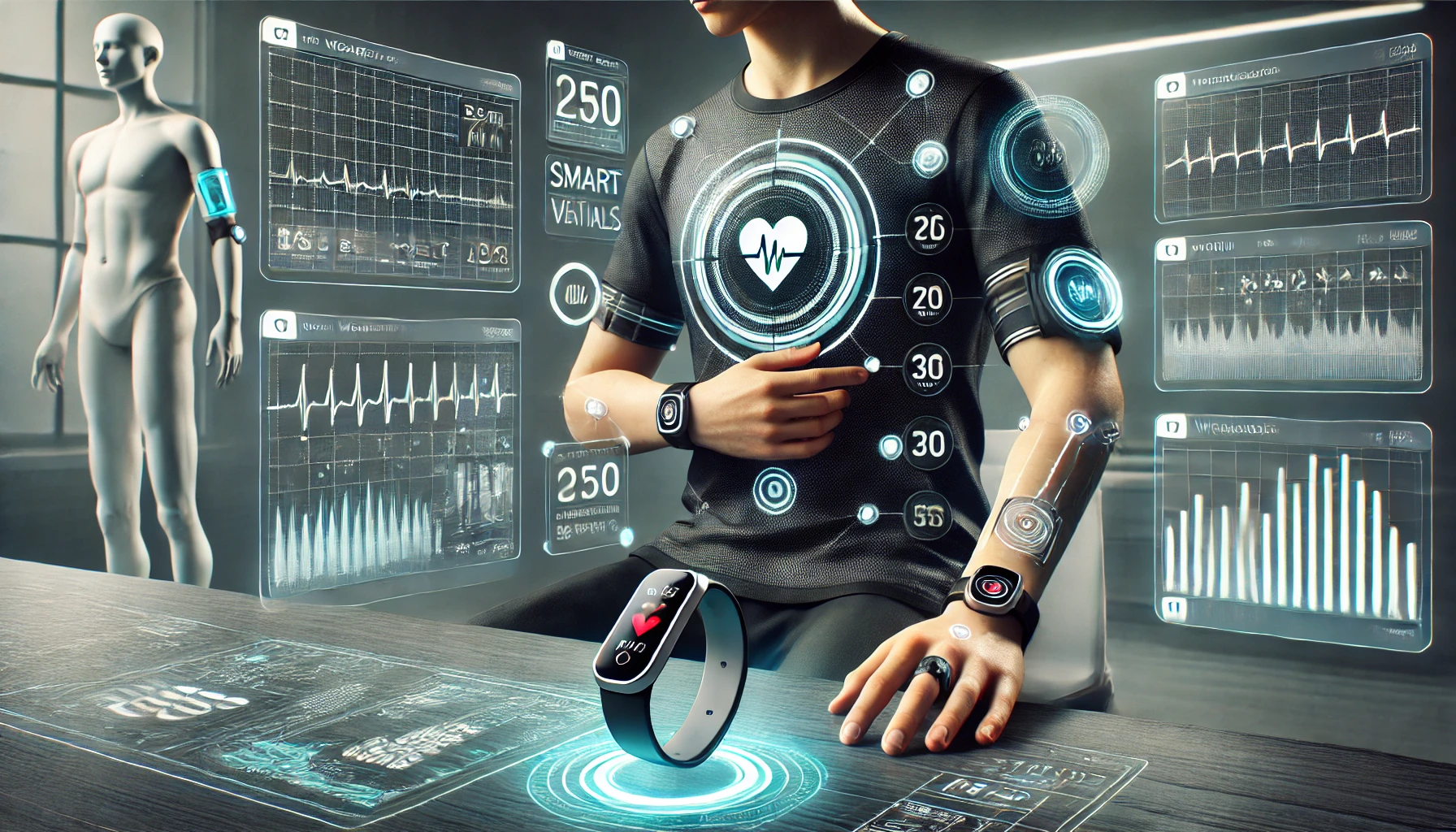Next-Gen Wearables: Beyond the Wrist - The Future of Health Tech in Every Stitch and Patch

From Wrists to Wardrobes: The Evolution of Wearable Health Devices
Wearable technology is leaping off the wrist and embedding itself into our clothes, rings, and even patches. Gone are the days when the only option for tracking your health was a chunky smartwatch. Now, innovators in the field are crafting wearable tech that’s far more discreet yet just as powerful. Imagine your favorite T-shirt monitoring your heart rate or a smart patch that sticks to your arm and keeps an eye on your glucose levels. It’s like living in a sci-fi movie, but it’s happening right now.
Smart Fabrics: Fashion Meets Function
One of the coolest advancements is the rise of smart fabrics. Picture this: you throw on a shirt, and it’s not just keeping you warm—it’s measuring your vitals. Startups like Hexoskin and Myant are at the forefront of this revolution, embedding sensors into clothing to track things like heart rate, breathing patterns, and even muscle activity. Think of it as your personal fitness trainer sewn into your gym gear, except this one doesn’t yell at you for skipping leg day.
Smart Patches: Stick it and Forget it
If wearable clothing sounds too sci-fi for you, smart patches might be more your speed. These lightweight, flexible devices are designed to be worn directly on the skin, offering continuous monitoring of things like blood pressure, hydration levels, and glucose. Companies like Dexcom and Abbott are making waves with their glucose-monitoring patches, especially for those managing diabetes. With these little patches, users can say goodbye to constant finger pricks and hello to real-time data that helps them manage their condition effortlessly.
Rings That Do More Than Just Look Pretty
Another unexpected player in the wearable tech world is the humble ring. Smart rings are now more than just a fashion statement—they're becoming mini health-monitoring powerhouses. Companies like Oura and Motiv have created rings that track sleep patterns, heart rhythm, and even temperature. These sleek, discreet devices are perfect for people who want to keep tabs on their health without wearing something bulky on their wrist. Plus, they’re stylish enough to wear out on the town without screaming 'fitness tracker.'
Startups Leading the Charge
The wearable tech space is crowded with innovative companies pushing boundaries. Hexoskin and Myant are all about turning everyday clothing into health-monitoring super suits, while Dexcom and Abbott focus on game-changing smart patches. Oura and Motiv have cornered the market on smart rings, creating devices that track vital signs 24/7. These companies are paving the way for a future where wearables are seamlessly integrated into our daily lives, making health tracking as easy as getting dressed in the morning.
How Wearables are Revolutionizing Healthcare
It’s not just fitness buffs benefiting from these advancements—wearables are reshaping the management of chronic diseases. For people living with conditions like diabetes, heart disease, or high blood pressure, these devices offer continuous, real-time data that can be life-saving. No longer do patients need to rely solely on periodic check-ups; now, their health data is being monitored 24/7, allowing for personalized treatment plans. It's like having a medical team in your pocket—or rather, on your skin.
The Future of Personalized Healthcare
As wearable tech continues to evolve, we’re heading toward a future where healthcare is hyper-personalized. Devices that monitor your vitals, sleep patterns, and even stress levels will allow doctors to tailor treatments specifically for you. Imagine a world where your doctor can adjust your medication based on data from your smart shirt or where a patch on your arm alerts you when your glucose levels are off. Personalized healthcare is no longer a pipe dream—it’s here, and wearables are leading the charge.
What’s Next for Wearable Tech
So, what’s on the horizon for wearable health devices? The next big thing could be wearables that not only monitor your health but also predict potential problems before they arise. We’re talking about AI-driven wearables that analyze data in real-time and send alerts when something’s off. Imagine getting a notification from your shirt that says, 'Hey, your heart rate’s a little high—maybe take a breather.' The potential for early intervention could revolutionize healthcare as we know it.
Conclusion: How Will You Wear Your Health in the Future?
With wearables evolving beyond the wrist, we’re entering a new era of health tech where your clothes, jewelry, and even skin patches will keep you informed about your well-being. Whether it’s a smart ring that tracks your sleep or a patch that monitors your glucose levels, wearable tech is making personalized healthcare more accessible than ever. As these innovations continue to grow, it’s exciting to think about what’s next. Will you be wearing your health on your sleeve—literally? How do you think these advancements will change the way we manage our health in the future?



